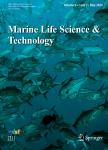Application of enzymes as a feed additive in aquaculture
作者机构:College of Food Science and EngineeringOcean University of ChinaQingdao266003China College of Biology and GeographyYili Normal UniversityYining835000China Istituto di Scienze e Tecnologie Chimiche“Giulio Natta”CNRVia Mario Bianco n.920131MilanItaly
出 版 物:《Marine Life Science & Technology》 (海洋生命科学与技术(英文))
年 卷 期:2022年第4卷第2期
页 面:208-221页
核心收录:
学科分类:0710[理学-生物学] 0908[农学-水产] 09[农学]
基 金:supported by the National Key Research and Development Program of China(2019YFD0900201) by the National Research Council of Italy(CNR)in the contest of the bilateral project(CNR Prot.n.0082796/2020)between CNR the Ministry of Science and Technology of the People’s Republic of China(MOST)
主 题:Enzymes Fish feed Aquaculture Feed additive Enzyme microencapsulation
摘 要:Modern aquaculture must be sustainable in terms of energy consumption, raw materials used, and environmental impact, so alternatives are needed to replace fish feed with other raw materials. Enzyme use in the agri-food industry is based on their efficiency, safety, and protection of the environment, which aligns with the requirements of a resource-saving production system. Enzyme supplementation in fish feed can improve digestibility and absorption of both plant- and animal-derived ingredients, increasing the growth parameters of aquacultural animals. Herein we summarized the recent literature that reported the use of digestive enzymes (amylases, lipases, proteases, cellulases, and hemicellulases) and non-digestive enzymes (phytases, glucose oxidase, and lysozyme) in fish feed. In addition, we analyzed how critical steps of the pelleting process, including microencapsulation and immobilization, can interfere with enzyme activity in the final fish feed product.



